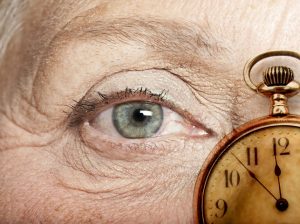A newly refined method for measuring the pace of aging in population-based studies offers a powerful tool for predicting risks associated with aging, including chronic disease, cognitive impairment, disability, and mortality. Developed by researchers at Columbia University’s Mailman School of Public Health, the method offers researchers and policymakers a novel approach to quantifying the rate at which individuals and populations experience age-related health decline.
Method Developed to Evaluate the Effectiveness of Interventions Targeting the Biology of Aging
Until now, measures used in population health research on aging did not distinguish between differences caused by factors in early life, such as prenatal care and nutrition, and those caused by age-related changes in the human body. “The pace-of-aging method is an important approach to understanding population aging,” explained Arun Balachandran, PhD, postdoctoral scholar at the Columbia Aging Center and lead author of the study. “Our existing toolkit does not include methods to separate the effects of the early years of life from changes caused by aging,” explains Daniel Belsky, PhD, associate professor of epidemiology at Columbia Mailman School and member of the Robert N. Butler Columbia Aging Center.
The researchers originally developed the pace-of-aging method to evaluate the effectiveness of interventions targeting the biology of aging. The new approach presented in this study aims to do the same for social policy and public health programs. This method will enable researchers and public health professionals working with population data to better understand how policy, social structures, the environment, and individual behavior influence aging processes in populations worldwide.
The team analyzed data from two large-scale, nationally representative studies: the US Health and Retirement Study (HRS) and the English Longitudinal Study of Aging (ELSA). These longitudinal studies follow adults aged 50 and older—along with their spouses—and collect detailed information on health, cognitive abilities, socioeconomic status, and family dynamics. The studies have been running for decades and regularly recruit new participants. The new approach uses data from dried blood samples, physical examinations, and performance tests conducted in participants’ homes at up to three points in time over an eight-year period. The rate of aging was examined in 19,045 participants who provided data between 2006 and 2016, with additional follow-up until 2022 to determine disease, disability, and mortality. In the US study, the rate of aging was measured using C-reactive protein (CRP), cystatin C, glycated hemoglobin (HbA1C), diastolic blood pressure, waist circumference, lung capacity (peak flow), balance, grip strength, and walking speed.
Valuable Resource for Monitoring and Improving the Health and Longevity of the Population
“Our findings show that we can measure important variations in the rate of aging in older people with a relatively limited number of measurements,” said Belsky. “Our findings open up opportunities to study the rate of aging in cohorts around the world,” added Balachandran. These measures consistently predict future health outcomes such as disease onset, disability, and death. They also reveal important differences in the aging processes of different population groups. For example, the study found signs of accelerated aging in people with lower levels of education.
Originally developed using data from the Dunedin Study, a long-term study of individuals born between 1972 and 1973, the Pace of Aging tool initially focused on changes from young adulthood to midlife. The newly adapted method extends the scope to population-based studies on aging and provides planners and policymakers with a valuable resource for monitoring and improving the health and longevity of the population. According to the researchers, people who aged faster were much more likely to fall ill, become disabled, or die earlier, even if they were the same age on paper.






